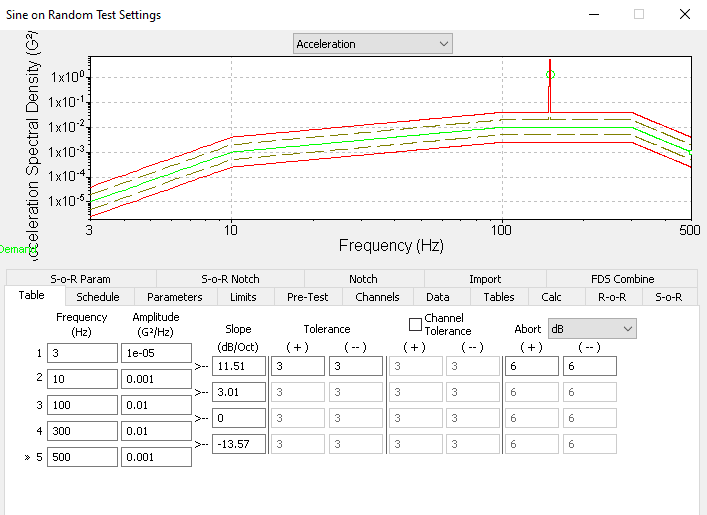Sine-on-Random Vibration Testing
February 23, 2021
Back to: Test Development with Recorded Data
Developing a vibration test representative of the end-use environment is critical when evaluating a product. Many environments contain both sinusoidal and random vibration, and mixed-mode environments require particular attention when developing an appropriate test.
A device with rotational components, for example, is exposed to both sinusoidal and random vibration. The dominant sinusoidal vibration derives from the rotating part(s), and random vibration is present in the background. Both the sine and random vibration are relevant to product testing; therefore, a vibration test meant to represent such an environment must include both sine and random test profiles.
While random tests are standard in vibration testing, they are not suitable for replicating the vibration in this environment. Instead, a Sine-on-Random (SoR) test should be employed to generate a vibration test using recorded data. Below, both test methods are discussed with consideration to devices with rotating parts.
Sinusoidal Vibration and the Fatigue Damage Spectrum (FDS)
As discussed in a previous lesson, the FDS is used to generate an accelerated random test from recorded data. If an environment contains random vibration only, the FDS can use a rain flow algorithm and cycle counting to create a power spectral density (PSD) that is the damage equivalent to the original environment. For a random-only environment, the FDS is a reliable option for creating an accelerated random test profile.
Random vibration tests are representative of real-world vibration; however, a random test cannot be used to re-create the vibration in an engine environment.
While the FDS accounts for non-Gaussian random vibration, the algorithm is not compatible with sinusoidal vibration. FDS analysis assumes the input data are random. If it is used to replicate the sinusoidal vibration in an engine environment, there would be random excitation at the sinusoidal frequencies, and the resulting test profile would be inaccurate.
All vibration should be represented in a test as accurately as possible. If the sinusoidal vibration caused an engine failure during the original test, then the sine tone profiles must be accurate to re-create the failure. Otherwise, test engineers will have trouble when determining the cause of failure.
SoR Test Generation
SoR is a test method that is better suited to re-create the vibration in these types of environments with recorded data. The sinusoidal and random vibration are processed separately and are then combined to result in a mixed-mode test with sine tones superimposed on a random background.

To generate an SoR test, the correct test acceleration method is used for both vibration types. The result is an accelerated vibration test reflective of the original environment.
Preview of STAG
There is not a standard method of SoR test generation and developing an SoR test can be time-consuming. Vibration Research developed the Sine Tracking, Analysis and Generation (STAG) tool to develop an SoR test with recorded field data. STAG was created with engine environments in mind. In the next lesson, we walk through the SoR test development process using recorded data.
